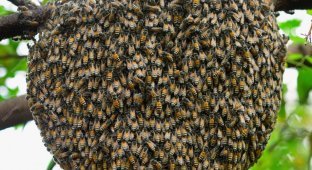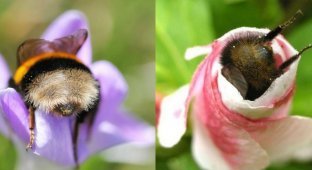Bee swarming: why are the workers leaving the hive en masse? (10 photos)
Swarming in bees is always caused by certain inconveniences. Perhaps the hive has become too crowded, too many bees. Or the queen has become too weak and is no longer able to control so many workers with pheromones. 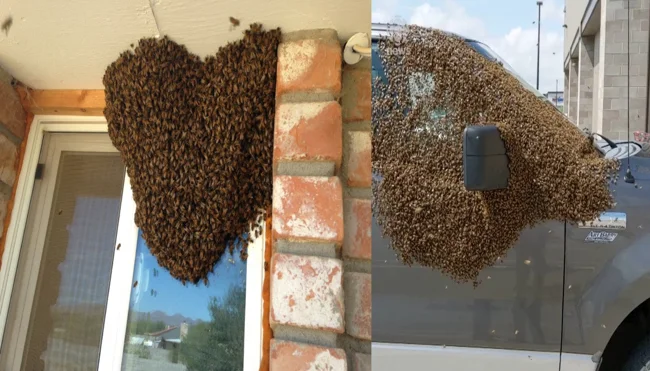
In any case, problems lead to a change in the behavior of ordinary bees and the appearance of several queen cells - honeycombs in which the future heirs of the hive mature. One of them will remain in charge of the house, while the old queen will gather her retinue and leave the hive. 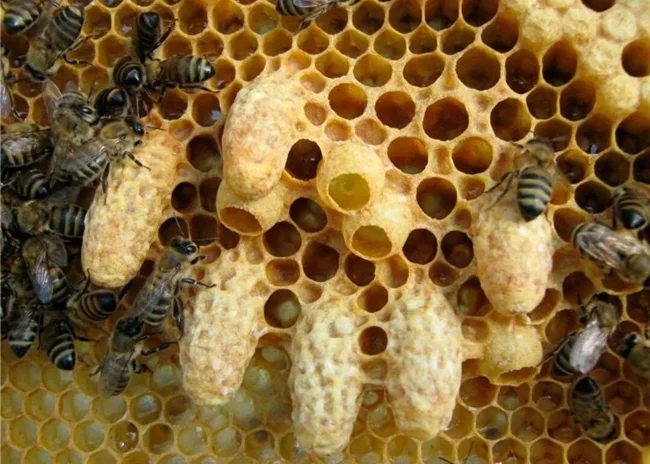
Even a layman can tell the difference between queen cells and regular honeycombs. Royal apartments for royalty!
By the way, don't confuse swarming with a flight. A flight is a crisis situation, a complete disaster. During a flight, bees leave the house without proper preparation and in a swarm, because their collective mind has decided that staying here means certain death. But in a new place, the colony has at least a ghostly chance of survival. Beekeepers avoid a flight by all possible means. 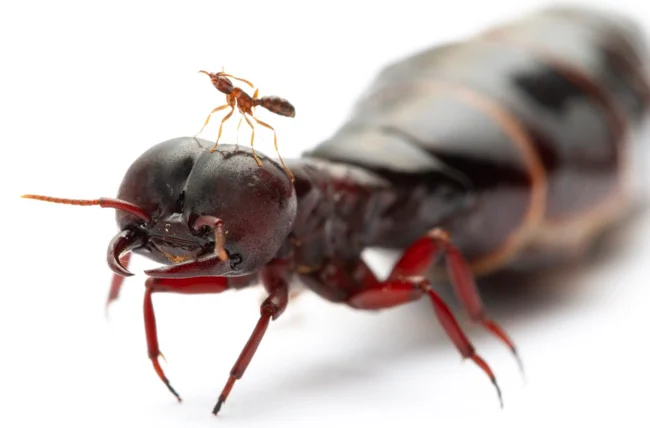
Ants, by the way, can reproduce in a similar way. First, the colony makes another anthill as a transit base, then its own queen moves into it. But this process takes not a week or two, but several years.
And swarming is a natural process of colony reproduction through their fragmentation. Although it can be postponed, it cannot be canceled completely. To dissuade the bees from leaving, the beekeeper can add additional frames to the hive, move the family to a new nest, or move it to a darker and cooler place. But in the wild there is no one to do this, and beekeepers cannot always react in time, so swarming will happen sooner or later. 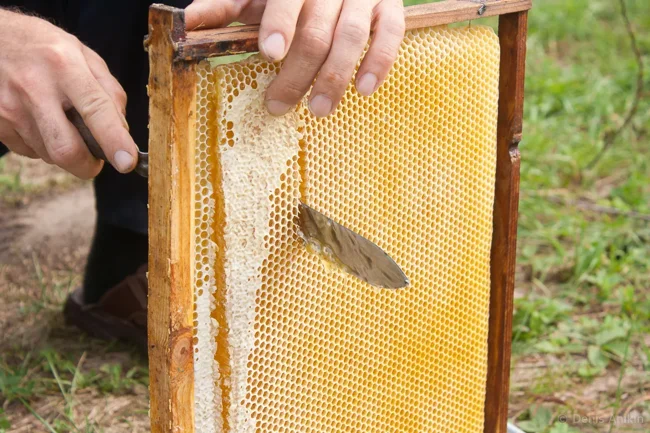
The frame in the bee nest is a kind of framework that is necessary for the correct placement of the honeycombs.
Swarming almost always begins in warm, clear and sunny weather. Most often, a new swarm is formed in the spring so that the young colony has time to stock up on food and survive the winter. But every year is different. Sometimes insects do not swarm at all, and sometimes they bud like crazy and beekeepers have to slow them down with all their might. Moreover, it is impossible to predict bee activity in advance; too many factors need to be taken into account. Here you have the number of bees, the condition of the nest, the fertility of the queen, honey reserves, climate, etc., etc. Experienced beekeepers can guess what the coming year will be like, but no one can say for sure. 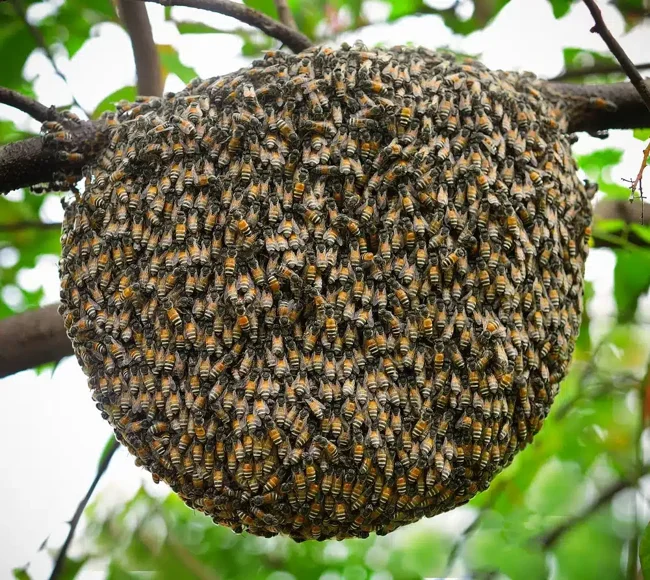
Here it is, a spherical swarm in a vacuum!
Swarm fragmentation is a thorough process that takes place in three stages. The first of them, the preparatory one, consists of two parallel processes. While the scouts are looking for a temporary parking lot for the swarm near the hive, the nurses put the queen on a starvation diet. After all, an adult queen is too heavy to fly and simply won't be able to leave the hive, first she needs to lose weight. Of course, she stops laying eggs. 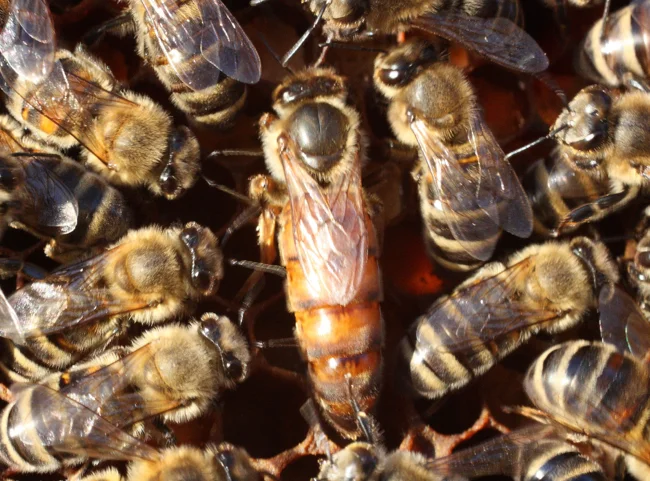
— Well, have you lost weight already? We need to fly, we won't drag you!
At the beginning of the second stage, the queen and her retinue land near the hive and send out scouts in all directions. The scouts look for suitable places to live and announce them by dancing. The better the place the bee finds, the more active and fiery she will dance. 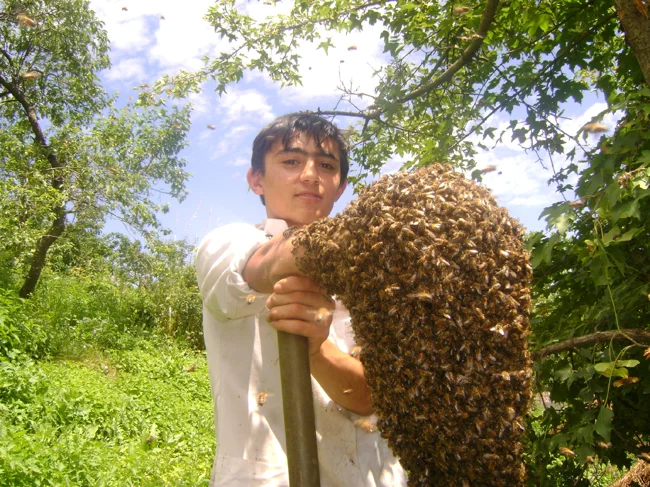
Perhaps we'll wait for intelligence data on this warm and cozy branch!
It takes bees from a couple of hours to three days to find a suitable place to live. It can't take longer, because the swarm has no food reserves at all, and the bees will begin to die of hunger. If an ideal place is still not found within three days, the family will have to choose the best of the worst. The second stage is the last chance to stop the fleeing swarm. It will no longer be possible to return them home, but if you catch the insects and put them in a comfortable house, they will not fly away! 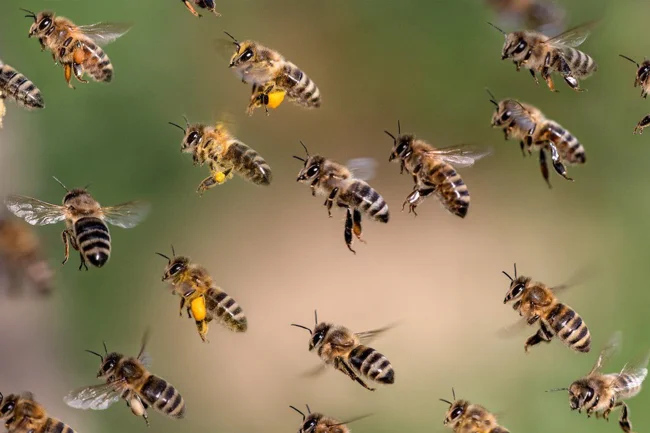
Forward, in all directions!
When a place for life is found, the shortest and most dangerous stage of swarming begins - the flight. During the flight, the queen, the main value of the swarm, remains unprotected and can be seized by any predator, from a dragonfly to a bird. And with the death of the queen, the line of fate of this swarm will be interrupted, they all will die without purpose and meaning. But if the young swarm copes with all the difficulties with dignity, then a new bee family will appear within a radius of several kilometers from the hive! 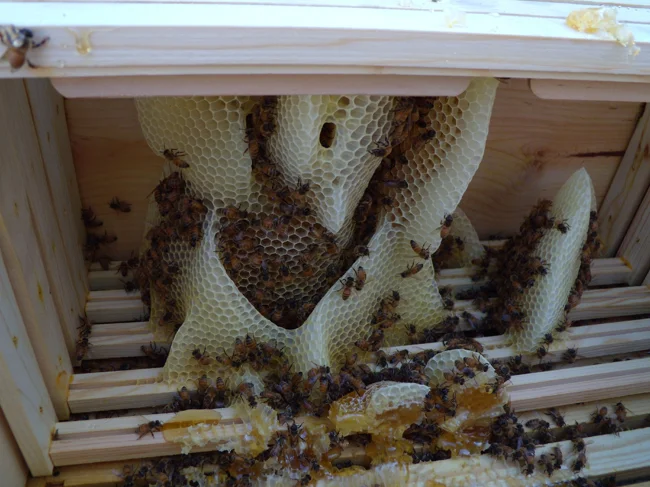
Well, now this is your common home!
It may arise, however, in a not very convenient place. Since bees choose dark and well-ventilated places to live, they can settle anywhere. In the attic, in the walls of a summer house or even under the hood of a car! 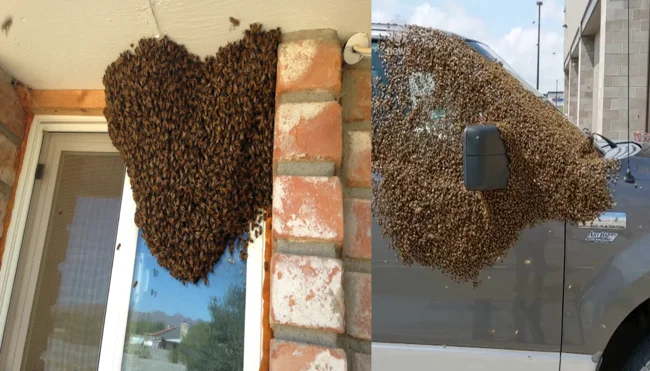
It's good if this is a temporary parking lot. And if the bees decide to build their main hive here, then everyone will have fun.












